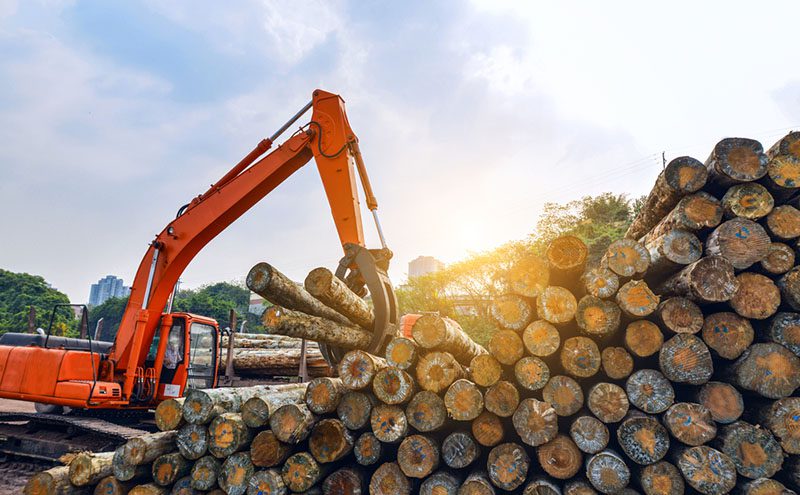
Can the way we use wood mitigate climate change and support the bioeconomy? The answer is yes, according to a new PhD thesis from the University of Eastern Finland, investigating how wood use can contribute to avoiding or reducing the negative effects of climate change, and support the bioeconomy.
“A key finding of the study is that positive climate change mitigation effects can be gained only if efforts are made to use more wood for long-lived wood products. It is not enough to only harvest more and expect that it brings along positive effects of wood use,” says PhD student Gediminias Jasinevičius, MSc, from the University of Eastern Finland.
Some European countries could use their forests more and at the same time mitigate climate change, but the overall effect on climate change and the socio-economic performance of the forest sector lies with the way we use the harvested wood. It makes a difference if wood is used for short-lived products or for building a house that later can be turned into energy.
Forests play an important role in the global carbon cycle and contribute to climate change mitigation. Forests absorb carbon from the atmosphere through photosynthesis and store the carbon in living biomass, dead wood, litter and soil. Once wood is harvested, a significant amount of carbon is removed from the forest and can then be stored for decades in long-lived wood products such as wooden houses and furniture. So far, many studies have focused on carbon stored in forests, but fewer studies have focused on the role of wood products.
The new PhD thesis now intends to fill this gap in knowledge. The study analysed and applied various methods and models in order to estimate the effects of wood use effects on climate change mitigation, and to reveal the environmental, economic and even social effects of wood use.
The study traced the flows of wood in Lithuania and the Czech Republic starting from the forest through the wood processing industry until the end use of products, with an emphasis on carbon storage and climate mitigation effects. The results show that conventional carbon accounting methods for harvest wood products may lead to a significant underestimation of the carbon stored in wood products. The study found that in some countries, the annual carbon budget in wood products is 40% higher when calculated with a more detailed method.
According to the study, the effects of wood use can be strengthened only if substantial actions are taken to use more domestic wood for long-life wood products. If the use of wood is increased without restructuring wood production and consumption patterns, the effects on total forest carbon balance might be even negative. Therefore, a holistic approach taking into account the whole supply chain and consumer behaviour is needed. In other words, to enhance the climate change mitigation effect, demand should be oriented towards long-lived wood products, replacing other materials that require lot of energy for their production.
For instance, a model-based scenario analysis on Lithuania revealed that an increase of wood utilisation (up to 20%) and reduced log export (up to 50%) might support the country’s bioeconomy through significant socio-economic benefits in terms of employment and added value. Positive socio-economic effects of increased wood use were found in all scenarios of increased wood use. However, the climate change mitigation effect was only positive when additionally harvested wood was used for products with long life-spans. Therefore, decisions on forest resources use should be considered carefully, while taking into account possible positive and negative effects of increase wood use. Decision-making affecting the use of forest resources should increasingly consider cross-sectoral effects of wood product use and net impacts on the bioeconomy and global climate change mitigation.
The study was carried out at the European Forest Institute and the University of Eastern Finland with support from the EU’s 7th framework project ‘CASTLE’ Marie Curie Initial Training Networks action.
The findings were originally reported in International Wood Products Journal, Forests, and Journal of Industrial Ecology.
The PhD thesis by Gediminas Jasinevičius, entitled The role of wood products in climate change mitigation: carbon accounting methods and scenario analysis in two European countries, is available for download at: http://epublications.uef.fi/pub/urn_isbn_978-952-61-2892-4/urn_isbn_978-952-61-2892-4.pdf






